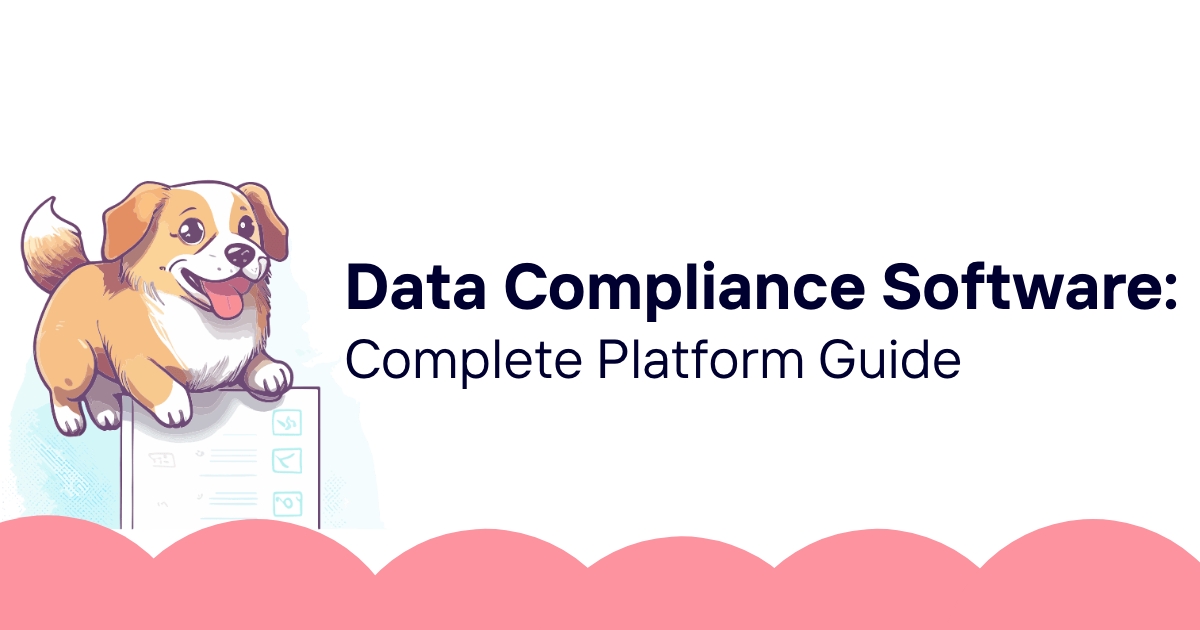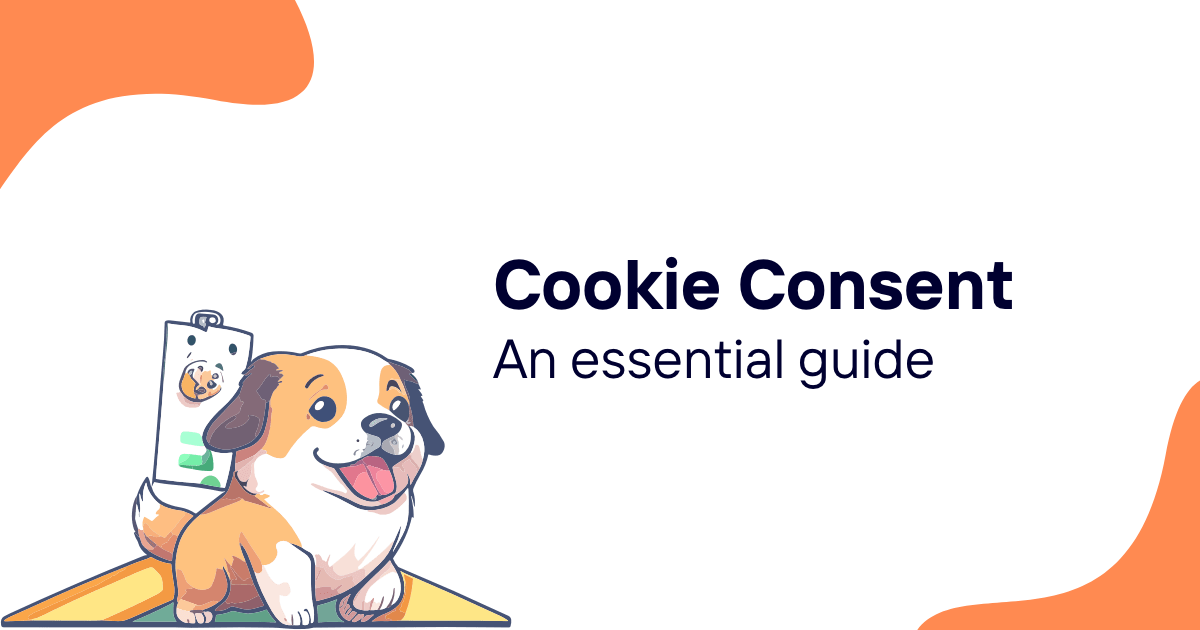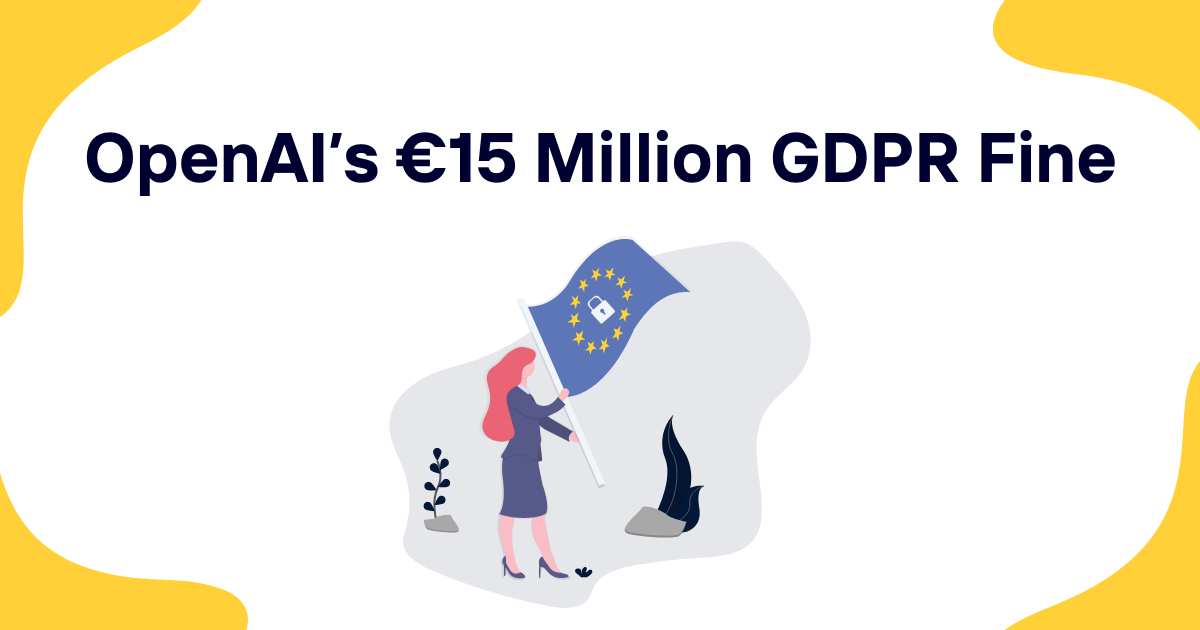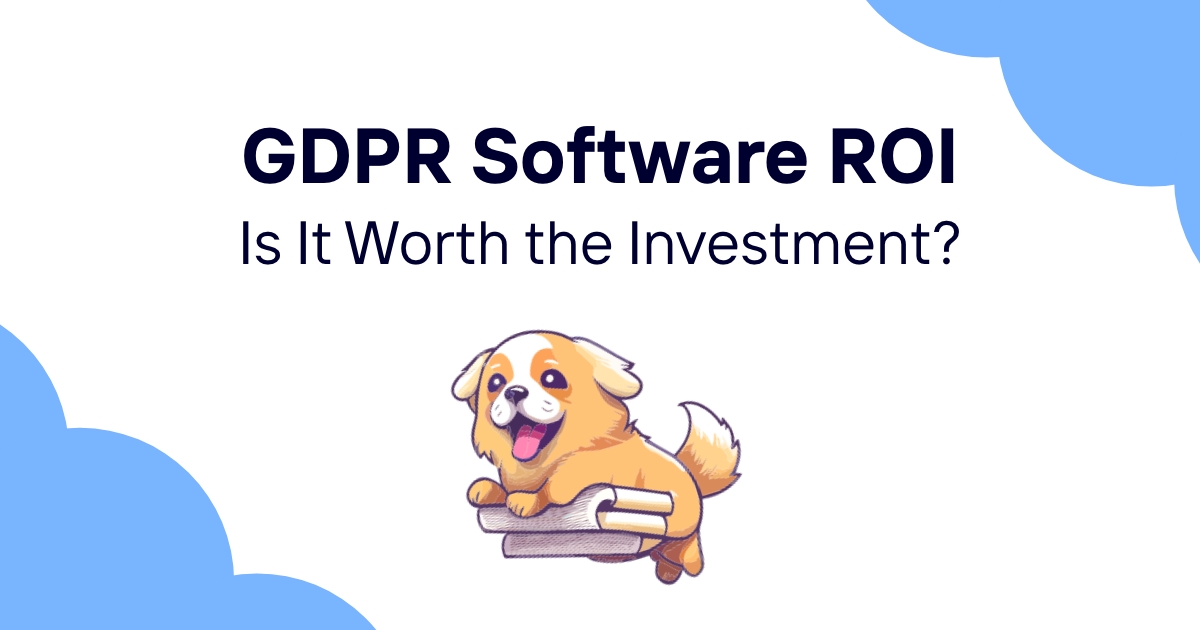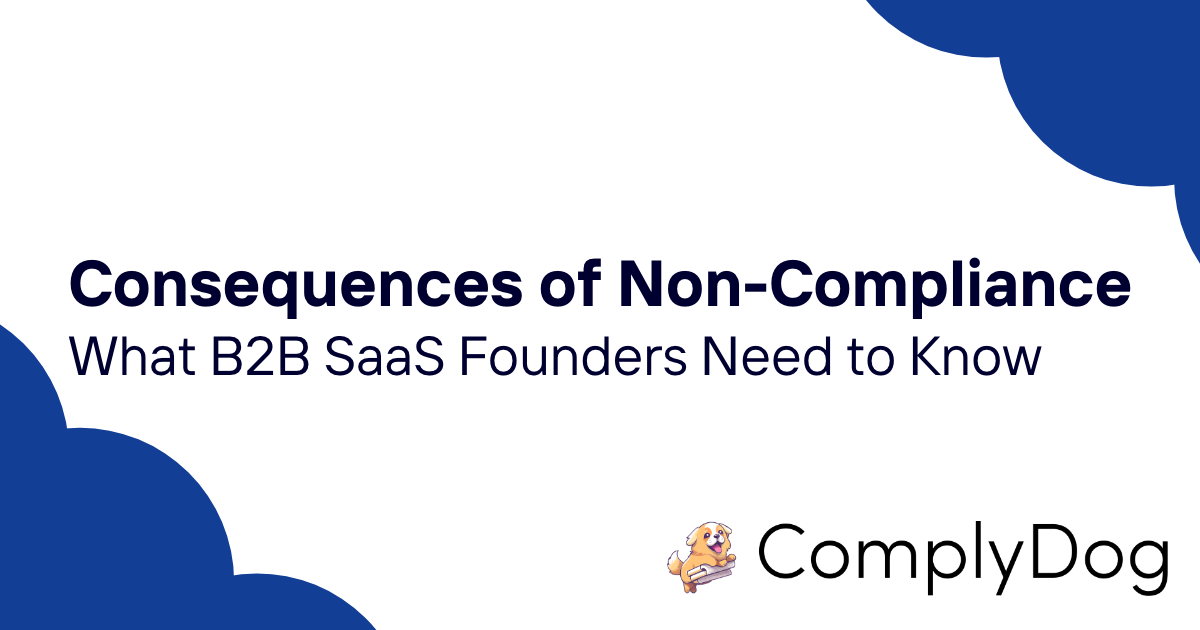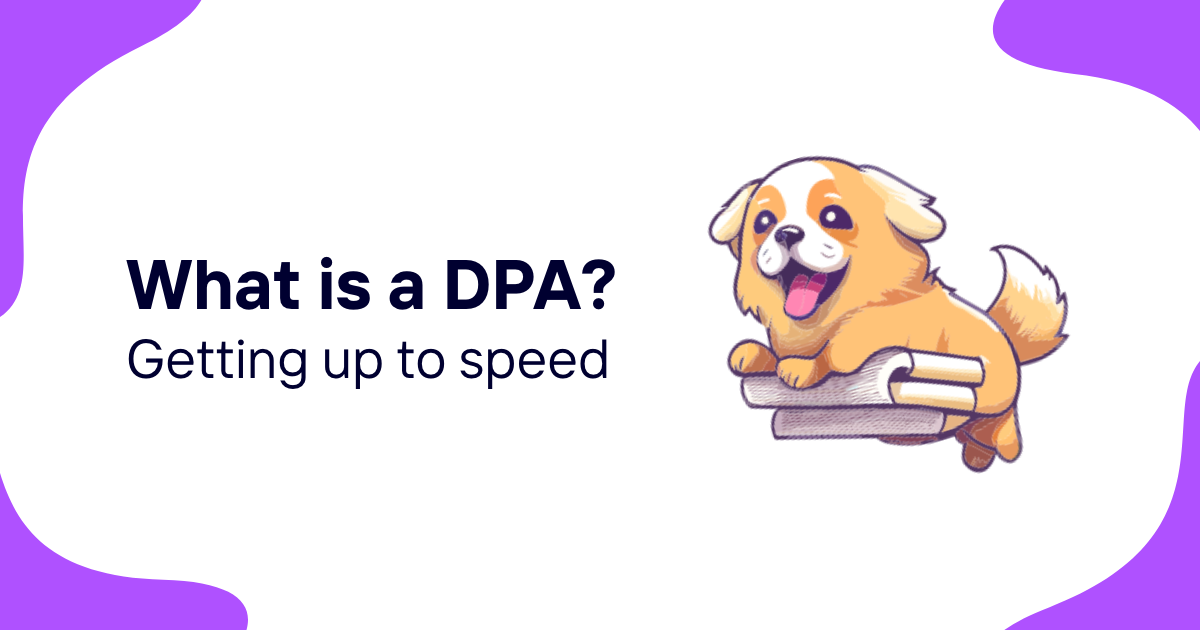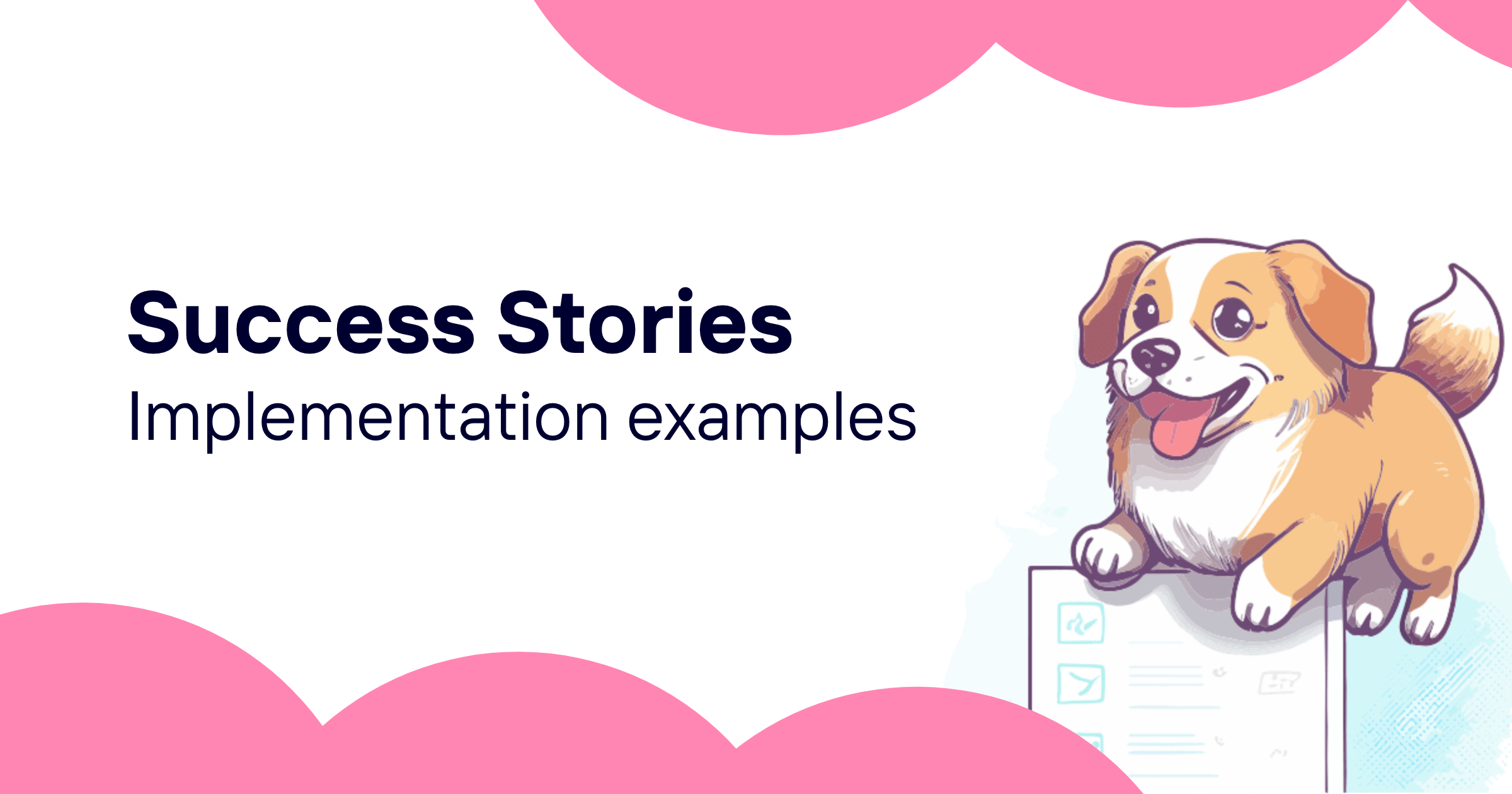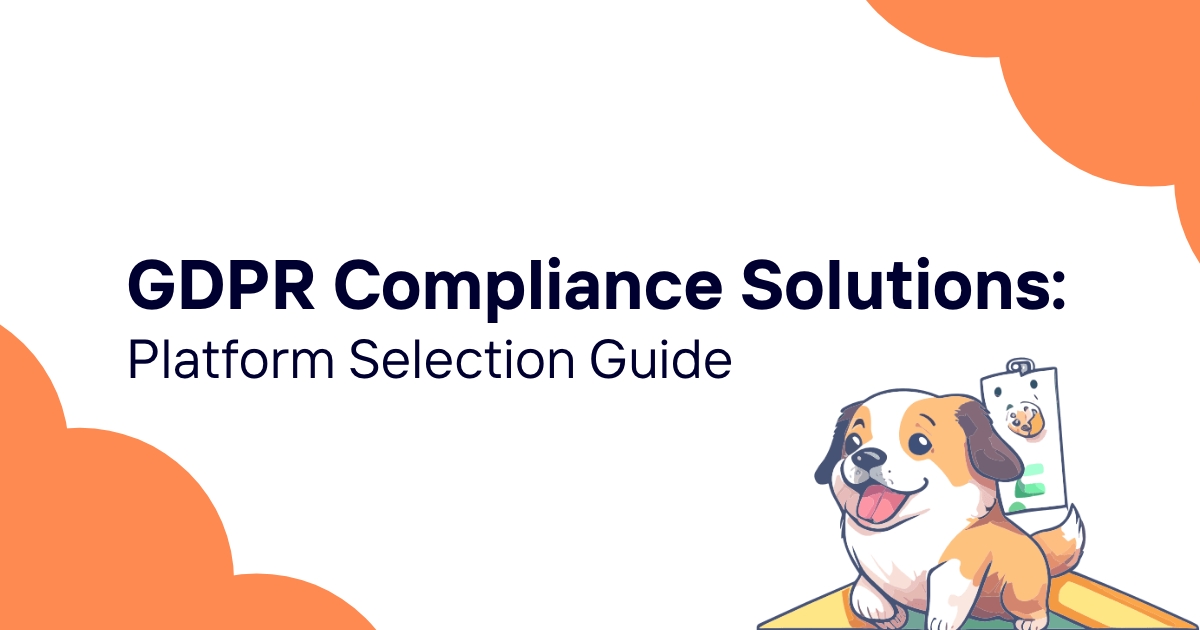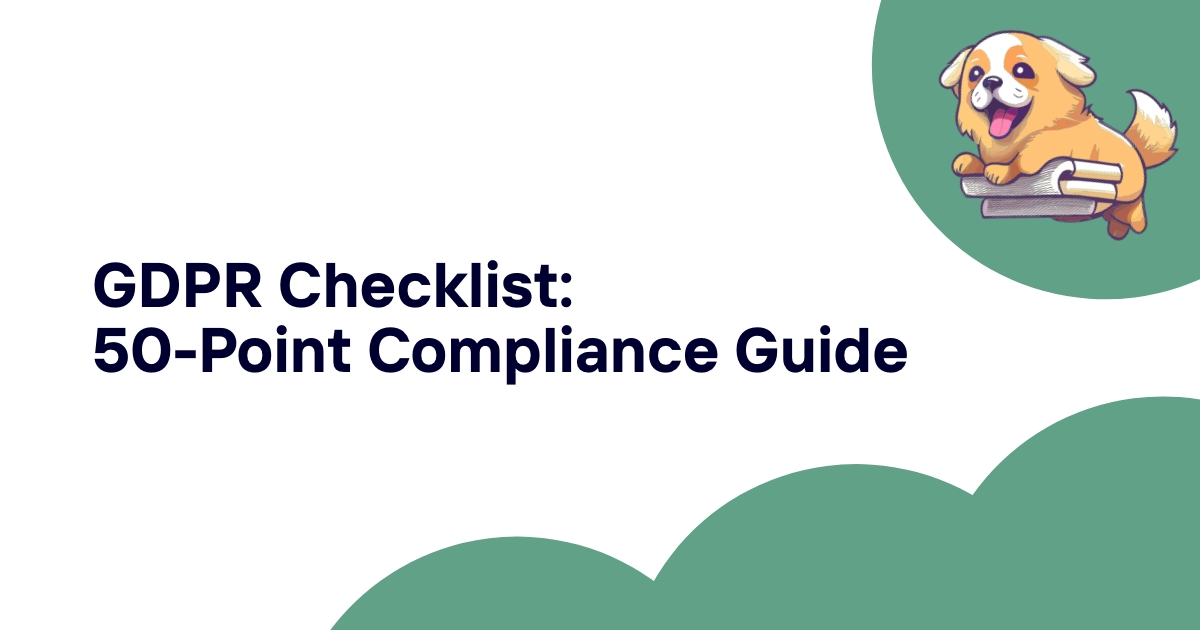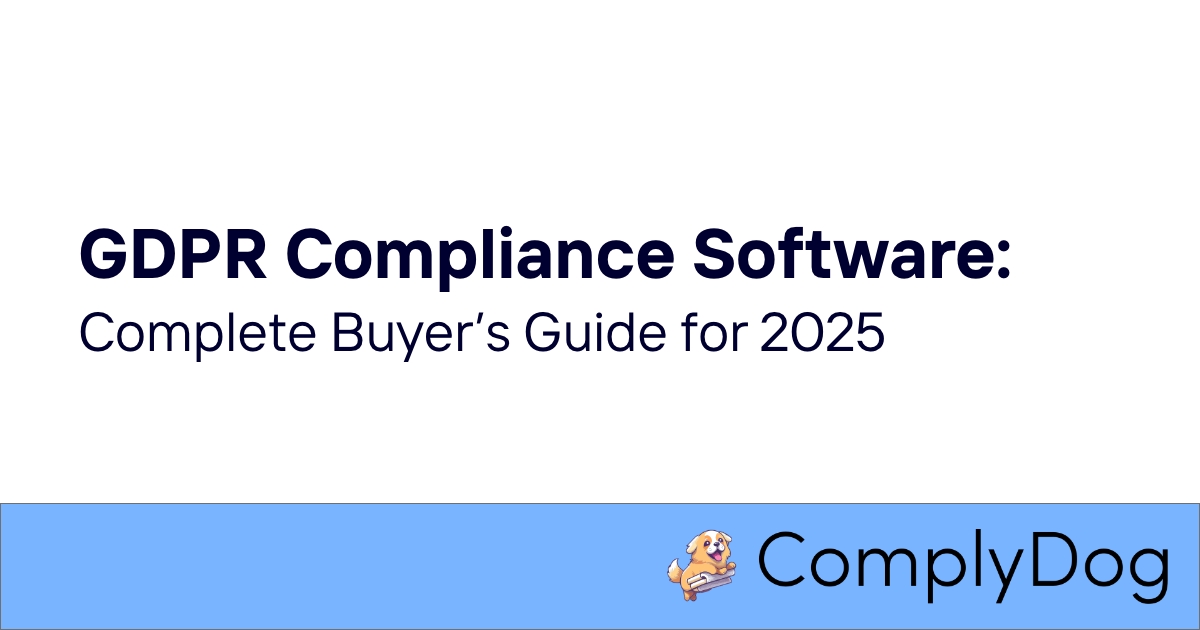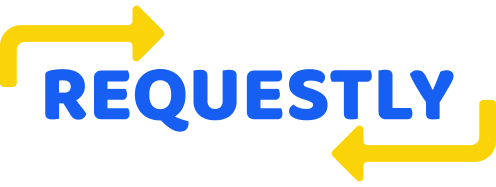Data compliance software has become essential for organizations navigating complex privacy regulations while maintaining operational efficiency and customer trust. With regulations like GDPR, CCPA, PIPEDA, and emerging privacy laws creating overlapping requirements, comprehensive platforms help organizations manage compliance systematically rather than through fragmented manual processes.
This guide explores the complete landscape of data compliance software, examining features, capabilities, and implementation considerations that help organizations choose platforms aligned with their specific regulatory requirements, business objectives, and operational constraints.
Data Compliance Software Overview
Data compliance software encompasses platforms and tools designed to help organizations manage personal data in accordance with privacy regulations, industry standards, and internal governance requirements.
Evolution of Compliance Software
The data compliance software market has evolved significantly as privacy regulations have expanded globally:
Regulatory Driver Growth: The introduction of GDPR in 2018 sparked massive growth in compliance software, followed by CCPA, LGPD, and other regional privacy laws.
Comprehensive Platform Development: Early point solutions have evolved into comprehensive platforms that address multiple regulations and compliance requirements simultaneously.
Automation Focus: Modern platforms emphasize automation of manual compliance tasks including data discovery, rights processing, and compliance reporting.
Industry Specialization: Vendors increasingly offer industry-specific features for healthcare, financial services, education, and other sectors with specialized compliance requirements.
Integration Emphasis: Contemporary platforms prioritize integration with existing business systems rather than operating as standalone compliance tools.
Market Landscape and Segments
The data compliance software market includes various platform types serving different organizational needs:
Enterprise Privacy Management: Comprehensive platforms designed for large organizations with complex, multi-jurisdictional compliance requirements.
SMB Privacy Solutions: Streamlined platforms that provide essential compliance capabilities for smaller organizations with limited resources.
Industry-Specific Platforms: Specialized solutions designed for particular sectors like healthcare (HIPAA), finance (SOX), or education (FERPA).
Regional Compliance Tools: Platforms focused on specific geographic regions or regulatory frameworks like EU GDPR or California privacy laws.
Hybrid and Multi-Regulation Platforms: Solutions that address multiple regulatory frameworks simultaneously while providing unified compliance management.
Business Value Proposition
Data compliance software provides value beyond regulatory adherence:
Risk Mitigation: Platforms help organizations avoid costly regulatory penalties and reduce data breach likelihood through systematic protection measures.
Operational Efficiency: Automation reduces manual compliance work, enabling staff to focus on strategic business activities rather than administrative tasks.
Customer Trust: Demonstrable compliance capabilities enhance customer confidence and can provide competitive advantages in privacy-conscious markets.
Business Enablement: Effective compliance platforms enable data-driven business activities while maintaining appropriate privacy protections.
Scalability Support: Automated compliance systems enable business growth without proportional increases in compliance overhead and resources.
Selection Considerations
Choosing appropriate data compliance software requires evaluating multiple factors:
Regulatory Scope: Understanding which privacy laws apply to your organization and ensuring platform coverage aligns with compliance obligations.
Business Model Alignment: Selecting platforms that support your specific business model, customer relationships, and operational requirements.
Technical Integration: Ensuring compatibility with existing technology infrastructure and business applications.
Resource Constraints: Matching platform complexity and resource requirements with organizational capabilities and budget constraints.
Growth Trajectory: Choosing solutions that can scale with business expansion and evolving compliance requirements.
Key Features and Capabilities
Effective data compliance software must address core privacy and data protection requirements while providing operational efficiency and business value.
Data Discovery and Inventory
Comprehensive data discovery forms the foundation of effective compliance management:
Automated Scanning: Platforms should automatically identify personal data across databases, file systems, cloud storage, and business applications.
Intelligent Classification: Advanced classification capabilities using machine learning and pattern recognition to identify data types and sensitivity levels.
Data Mapping: Visual representation of data flows showing how personal information moves through organizational systems and business processes.
Inventory Management: Centralized inventory systems that maintain current records of all personal data processing activities and locations.
Change Detection: Ongoing monitoring that identifies new personal data sources and changes to existing data processing activities.
Privacy Rights Management
Efficient processing of individual privacy rights requires sophisticated automation and workflow capabilities:
Multi-Channel Intake: Systems that capture rights requests from various sources including email, web forms, phone calls, and customer service interactions.
Request Routing: Automated routing of different request types to appropriate teams and systems for efficient processing.
Data Compilation: Automated systems that locate and compile all personal data associated with specific individuals across organizational systems.
Response Generation: Tools that automatically generate compliant responses including required information and appropriate formatting.
Timeline Management: Tracking and alert systems that ensure compliance with regulatory response deadlines and extension requirements.
Consent and Preference Management
Consent collection and management capabilities must support various business models and user experiences:
Consent Collection: Tools for collecting valid consent through websites, applications, and other customer touchpoints.
Preference Centers: User-friendly interfaces that enable individuals to manage their privacy preferences and consent choices.
Consent Recording: Comprehensive logging of consent decisions including timing, scope, and withdrawal activities.
Cross-Channel Synchronization: Systems that maintain consistent consent preferences across multiple customer touchpoints and business systems.
Compliance Verification: Tools that verify consent collection meets regulatory requirements and organizational standards.
Risk Assessment and Monitoring
Ongoing risk assessment helps organizations identify and address privacy compliance issues proactively:
Privacy Impact Assessments: Structured tools for evaluating privacy risks associated with new projects, systems, and business processes.
Compliance Monitoring: Automated monitoring of compliance status across various regulatory requirements and organizational policies.
Risk Scoring: Quantitative or qualitative risk assessment that helps prioritize remediation efforts and resource allocation.
Vendor Risk Management: Tools for assessing and monitoring privacy risks associated with third-party service providers and business partners.
Incident Detection: Monitoring capabilities that identify potential privacy incidents and security breaches affecting personal data.
As outlined in our GDPR compliance solutions guide, comprehensive platforms must address multiple aspects of privacy compliance through integrated functionality.
Regulatory Compliance Coverage
Modern data compliance software must address multiple regulatory frameworks while providing unified management capabilities.
Global Privacy Regulation Support
Comprehensive platforms address major privacy regulations across different jurisdictions:
General Data Protection Regulation (GDPR): European Union regulation requiring comprehensive privacy protections for EU residents' personal data.
California Consumer Privacy Act (CCPA/CPRA): California state law providing privacy rights and protections for California residents.
Personal Information Protection and Electronic Documents Act (PIPEDA): Canadian federal privacy law governing personal information handling by private organizations.
Lei Geral de Proteção de Dados (LGPD): Brazilian privacy law similar to GDPR providing comprehensive data protection requirements.
Regional Privacy Laws: Various state, provincial, and national privacy laws including Virginia CDPA, Connecticut CTDPA, and others.
Industry-Specific Compliance
Specialized regulatory requirements affect particular industries and business sectors:
Health Insurance Portability and Accountability Act (HIPAA): Healthcare industry requirements for protecting patient health information.
Family Educational Rights and Privacy Act (FERPA): Education sector requirements for protecting student educational records.
Gramm-Leach-Bliley Act (GLBA): Financial services requirements for protecting customer financial information.
Children's Online Privacy Protection Act (COPPA): Special protections for children's personal information online.
Payment Card Industry Data Security Standard (PCI DSS): Requirements for organizations handling credit card information.
Cross-Border Compliance Considerations
Global operations require addressing complex cross-border compliance scenarios:
Data Transfer Mechanisms: Support for various legal mechanisms including adequacy decisions, standard contractual clauses, and binding corporate rules.
Localization Requirements: Capabilities for managing data residency requirements in various jurisdictions.
Multi-Jurisdictional Reporting: Reporting capabilities that address different regulatory authorities and notification requirements.
Cultural and Language Support: Platform capabilities that support different languages and cultural privacy expectations.
Legal Framework Integration: Tools that help manage conflicts between different regulatory requirements across jurisdictions.
Emerging Regulatory Trends
Platforms must adapt to evolving privacy regulatory landscape:
AI and Algorithmic Governance: Emerging requirements for transparency and accountability in automated decision-making systems.
Biometric Data Protection: Enhanced protections for biometric identifiers and biometric information processing.
IoT and Connected Device Privacy: Requirements for privacy protections in Internet of Things and connected device environments.
Workplace Privacy: Evolving requirements for employee privacy protection and monitoring disclosure.
Cross-Border Enforcement: Increasing cooperation between regulatory authorities across different jurisdictions.
Data Discovery and Classification
Effective compliance requires comprehensive visibility into personal data across all organizational systems and business processes.
Automated Discovery Capabilities
Modern platforms provide sophisticated automation for identifying personal data across complex environments:
Multi-Source Scanning: Capability to discover data across databases, file systems, cloud storage, email systems, and business applications.
Pattern Recognition: Advanced algorithms that identify personal data using patterns, formats, and contextual analysis.
Machine Learning Classification: AI-powered classification that learns from organizational data patterns and improves accuracy over time.
Real-Time Discovery: Continuous monitoring that identifies new personal data as it enters organizational systems.
Structured and Unstructured Data: Capability to discover personal data in both structured databases and unstructured documents, emails, and files.
Data Classification Schemes
Systematic classification enables appropriate protection measures and compliance management:
Sensitivity Levels: Classification based on data sensitivity including public, internal, confidential, and restricted categories.
Regulatory Categories: Classification aligned with specific regulatory requirements such as GDPR special categories or HIPAA protected health information.
Business Context: Classification based on business use cases including customer data, employee information, marketing data, and operational data.
Retention Categories: Classification that supports retention management based on legal requirements and business necessity.
Geographic Categories: Classification based on data subject location and applicable regulatory frameworks.
Data Lineage and Flow Mapping
Understanding data movement enables comprehensive compliance management:
Source-to-Destination Tracking: Mapping how personal data moves from collection points through processing systems to final destinations.
Transformation Documentation: Recording how personal data is modified, aggregated, or combined throughout processing activities.
Integration Point Identification: Documenting all points where personal data crosses system boundaries or organizational boundaries.
Access Pattern Analysis: Understanding who accesses personal data, when, and for what purposes throughout its lifecycle.
Retention and Deletion Tracking: Monitoring data lifecycle including retention periods and deletion activities.
Quality and Accuracy Management
Data quality directly affects compliance effectiveness and business value:
Quality Assessment: Tools for evaluating data accuracy, completeness, and currency across different data sources.
Error Detection: Automated identification of data quality issues including duplicates, inconsistencies, and outdated information.
Correction Workflows: Processes for addressing data quality issues and implementing corrections across relevant systems.
Validation Rules: Configurable rules that prevent poor quality data from entering systems and identify quality degradation.
Quality Monitoring: Ongoing monitoring of data quality metrics and trends to identify systemic issues.
Privacy Rights Management
Comprehensive rights management ensures organizations can respond effectively to individual privacy requests while maintaining operational efficiency.
Request Processing Automation
Efficient rights processing requires sophisticated automation capabilities:
Intelligent Request Classification: Automated identification of request types including access, deletion, correction, portability, and objection requests.
Identity Verification: Secure but accessible methods for verifying requester identity while preventing fraudulent requests.
Data Retrieval Automation: Systems that automatically locate and compile all personal data associated with specific individuals.
Response Assembly: Automated compilation of responses including required information, explanations, and appropriate formatting.
Quality Assurance: Built-in review processes that verify response accuracy and completeness before delivery.
Multi-Regulation Rights Support
Platforms must support different rights frameworks across various privacy laws:
GDPR Rights: Access, rectification, erasure, restriction, portability, objection, and automated decision-making rights.
CCPA/CPRA Rights: Know, delete, correct, opt-out, and non-discrimination rights with California-specific requirements.
Other Regional Rights: Various rights under PIPEDA, LGPD, and other privacy laws with jurisdiction-specific requirements.
Industry-Specific Rights: Special rights under healthcare, education, and financial services regulations.
Custom Rights: Organizational policies that provide additional privacy rights beyond regulatory minimums.
Workflow and Collaboration
Complex rights processing requires efficient workflow management:
Team Coordination: Tools that enable collaboration between legal, IT, customer service, and business teams.
Escalation Procedures: Automated escalation for complex requests requiring legal review or business decision-making.
Communication Management: Templates and tools for communicating with requesters throughout the process.
Documentation Requirements: Comprehensive logging of all rights processing activities for compliance verification.
Performance Monitoring: Metrics and analytics for measuring rights processing efficiency and identifying improvement opportunities.
Exception and Complex Case Management
Some rights requests require special handling beyond standard automation:
Legal Review Queues: Workflows that route complex requests to legal teams for evaluation and guidance.
Business Impact Assessment: Tools for evaluating business implications of deletion or restriction requests.
Third-Party Coordination: Processes for coordinating rights fulfillment when personal data is shared with business partners.
Technical Limitation Handling: Procedures for addressing requests that cannot be fulfilled due to technical constraints.
Appeal and Dispute Management: Processes for handling disagreements about rights processing decisions.
As discussed in our enterprise vs SMB GDPR solutions guide, rights management complexity varies significantly based on organizational size and business model.
Compliance Monitoring and Reporting
Ongoing monitoring and comprehensive reporting support both operational management and regulatory accountability requirements.
Real-Time Compliance Monitoring
Continuous monitoring provides early warning of compliance issues:
Dashboard Visibility: Real-time dashboards that show compliance status across different regulatory requirements and business units.
Alert Systems: Automated alerts for potential compliance issues including missed deadlines, unusual data access, and system anomalies.
Key Performance Indicators: Metrics that track compliance performance including response times, completion rates, and quality measures.
Trend Analysis: Analytics that identify compliance trends and predict potential future issues.
Risk Indicators: Monitoring of risk factors that could lead to compliance violations or privacy incidents.
Regulatory Reporting Capabilities
Platforms must support various reporting requirements across different regulations:
Regulatory Authority Reports: Automated generation of reports required by data protection authorities and regulatory agencies.
Breach Notification: Tools for creating and submitting breach notifications within required timeframes.
Audit Documentation: Comprehensive documentation that supports regulatory examinations and compliance audits.
Cross-Jurisdictional Reporting: Capability to generate reports that address multiple regulatory requirements simultaneously.
Custom Reporting: Flexible reporting tools that can address specific organizational or regulatory requirements.
Executive and Stakeholder Reporting
Different stakeholders require different types of compliance information:
Executive Summaries: High-level compliance status reports appropriate for board and senior leadership review.
Operational Reports: Detailed reports for compliance teams that provide actionable information for day-to-day management.
Business Unit Reports: Customized reports for different business units showing relevant compliance metrics and requirements.
Third-Party Reports: Reports designed for sharing with business partners, customers, and vendors regarding compliance status.
Public Disclosure: Tools for creating public-facing privacy reports and transparency documents.
Performance Analytics and Optimization
Analytics capabilities help organizations continuously improve compliance effectiveness:
Process Efficiency: Analysis of compliance process performance including bottlenecks, delays, and resource utilization.
Cost Analysis: Tools for understanding compliance costs and identifying optimization opportunities.
User Experience Analytics: Insights into how privacy processes affect customer and employee experience.
Benchmarking: Comparison of compliance performance against industry standards and best practices.
Predictive Analytics: Advanced analytics that predict future compliance challenges and resource requirements.
Integration and Implementation
Successful data compliance software deployment requires careful attention to technical integration and organizational change management.
Technical Integration Requirements
Effective compliance platforms must integrate seamlessly with existing business systems:
Database Connectivity: Native connectors for popular databases including SQL Server, Oracle, MySQL, and cloud databases.
Business Application Integration: Pre-built integrations with CRM systems, marketing automation platforms, HR systems, and other business applications.
Cloud Platform Support: Integration with major cloud platforms including AWS, Azure, Google Cloud, and hybrid environments.
API Capabilities: Robust APIs that enable custom integrations with proprietary systems and specialized applications.
Security Integration: Compatibility with existing security frameworks including identity management, encryption, and monitoring systems.
Implementation Methodology
Systematic implementation approaches ensure successful deployment and user adoption:
Assessment and Planning: Comprehensive assessment of current compliance status and detailed implementation planning.
Phased Deployment: Staged implementation that builds capability progressively while minimizing business disruption.
Data Migration: Secure migration of existing compliance data and documentation into new platforms.
User Training: Comprehensive training programs for all users including administrators, compliance teams, and business users.
Testing and Validation: Systematic testing of all platform functionality and integration points before full deployment.
Change Management Considerations
Successful implementation requires addressing organizational change and adoption challenges:
Stakeholder Engagement: Early engagement of key stakeholders including legal, IT, business units, and executive leadership.
Communication Strategy: Clear communication about implementation objectives, timelines, and expected benefits.
Training and Support: Comprehensive training programs and ongoing support resources for effective platform adoption.
Process Documentation: Updated policies and procedures that reflect new compliance processes and platform capabilities.
Performance Monitoring: Ongoing monitoring of platform adoption and effectiveness with optimization based on user feedback.
Success Factors and Best Practices
Several factors contribute to successful data compliance software implementation:
Executive Sponsorship: Strong leadership support and resource commitment for implementation success.
Cross-Functional Collaboration: Effective collaboration between legal, IT, business, and compliance teams.
Realistic Timeline Planning: Appropriate time allocation for implementation phases and user adoption.
Vendor Partnership: Effective utilization of vendor expertise and support resources throughout implementation.
Continuous Improvement: Ongoing optimization based on experience, user feedback, and changing requirements.
Vendor Comparison and Selection
Choosing the right data compliance software vendor requires systematic evaluation across multiple criteria that affect both short-term implementation success and long-term platform value.
Vendor Evaluation Framework
Comprehensive evaluation should address various aspects of vendor capability and fit:
Product Functionality: Assessment of platform capabilities against specific compliance requirements and business needs.
Technical Architecture: Evaluation of platform scalability, security, and integration capabilities.
Industry Expertise: Vendor knowledge of specific industry requirements and regulatory landscapes.
Customer Base: Analysis of vendor customer base including similar organizations and use cases.
Financial Stability: Assessment of vendor financial health and long-term viability.
Support and Services: Evaluation of customer support quality, professional services, and ongoing vendor partnership.
Implementation and Support Comparison
Different vendors provide varying levels of implementation support and ongoing assistance:
Implementation Services: Professional services availability for platform deployment, customization, and integration.
Training Programs: Comprehensive training options including administrator certification and end-user education.
Documentation Quality: Platform documentation completeness, accuracy, and usability for different user types.
Support Responsiveness: Customer support quality including response times, resolution rates, and expertise levels.
Community Resources: User communities, forums, and peer support opportunities.
Pricing and Value Analysis
Total cost of ownership varies significantly between vendors and deployment approaches:
Licensing Models: Different pricing approaches including per-user, data volume, and flat-rate pricing.
Implementation Costs: Professional services requirements and associated costs for successful deployment.
Ongoing Expenses: Annual support, maintenance, and platform evolution costs.
Hidden Costs: Additional expenses for integration, customization, and ongoing platform management.
Value Realization: Timeline and magnitude of benefits including risk reduction, efficiency gains, and competitive advantages.
Strategic Considerations
Vendor selection should align with long-term organizational strategy and growth plans:
Platform Roadmap: Vendor development priorities and platform evolution plans.
Market Position: Vendor competitive positioning and market share trends.
Innovation Capability: Evidence of ongoing innovation and adaptation to changing regulatory requirements.
Partnership Approach: Vendor commitment to long-term customer relationships and mutual success.
Exit Strategy: Platform data portability and migration capabilities to avoid vendor lock-in.
Selecting appropriate data compliance software requires balancing comprehensive functionality with practical implementation considerations, cost constraints, and long-term strategic objectives. The most successful deployments result from careful evaluation of organizational needs, vendor capabilities, and realistic assessment of implementation requirements.
For organizations seeking comprehensive data compliance capabilities without unnecessary complexity, purpose-built platforms often provide better value and faster implementation than generic enterprise solutions designed for much larger organizations with different requirements.
Ready to explore data compliance software that matches your specific needs and regulatory requirements? Use ComplyDog and get comprehensive privacy compliance capabilities designed for efficient implementation, transparent pricing, and complete functionality that addresses multiple regulatory frameworks while maintaining operational simplicity and business focus.
